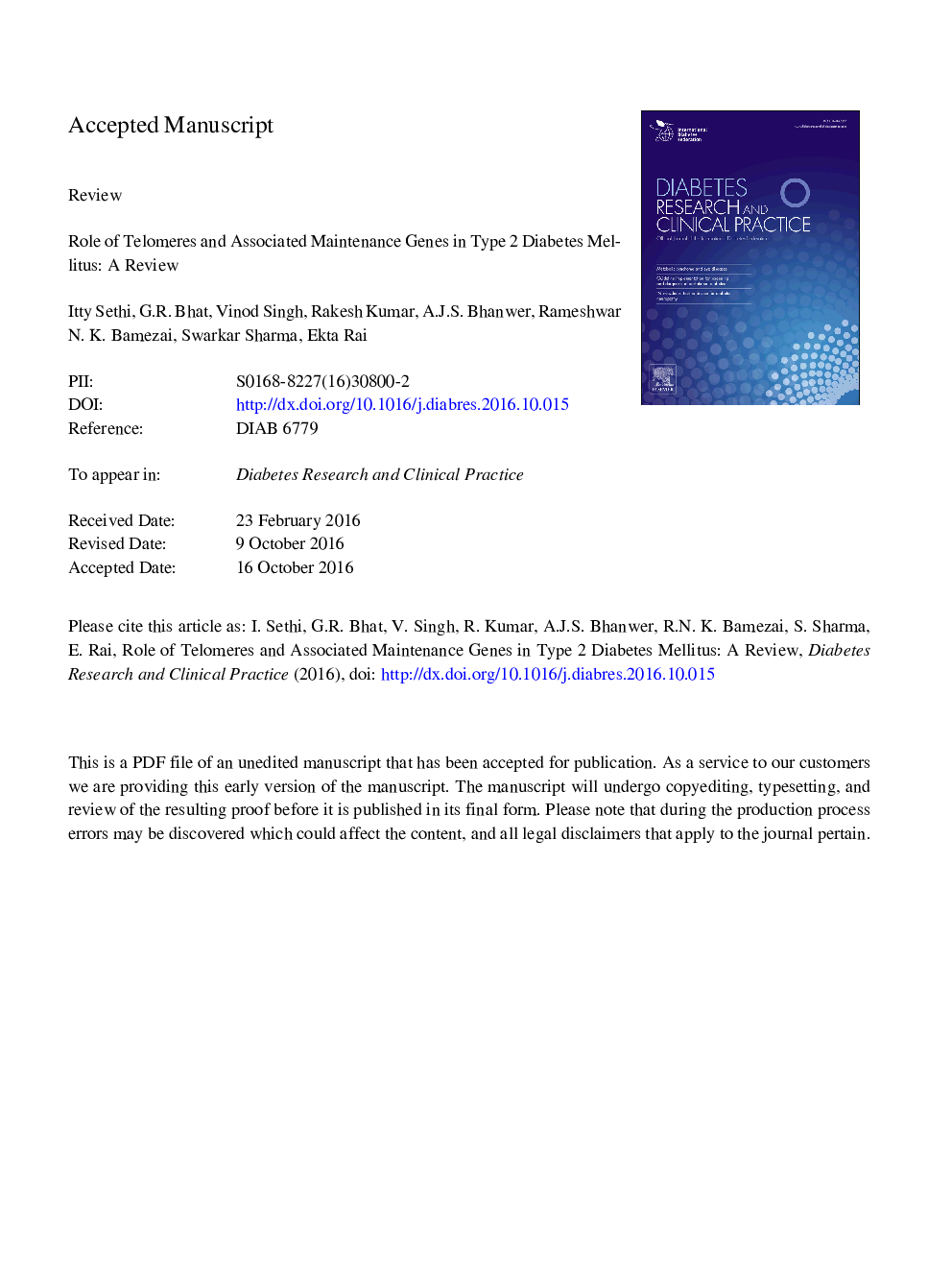| Article ID | Journal | Published Year | Pages | File Type |
|---|---|---|---|---|
| 5587454 | Diabetes Research and Clinical Practice | 2016 | 21 Pages |
Abstract
Type 2 Diabetes Mellitus (T2Â DM), a multifactorial complex disorder, is emerging as a major cause of morbidity, mortality and socio-economic burden across the world. Despite huge efforts in understanding genetics of T2Â DM, only â¼10% of the genetic factors have been identified so far. Telomere attrition, a natural phenomenon has recently emerged in understanding the pathophysiology of T2Â DM. It has been indicated that Telomeres and associated pathways might be the critical components in the disease etiology, though the mechanism(s) involved are not clear. Recent Genome Wide (GWAS) and Candidate Gene Case-Control Association Studies have also indicated an association of Telomere and associated pathways related genes with T2Â DM. Single Nucleotide Polymorphisms (SNPs) in the telomere maintenance genes: TERT, TERC, TNKS, CSNK2A2, TEP1, ACD, TRF1 and TRF2, have shown strong association with telomere attrition in T2Â DM and its pathophysiology, in these studies. However, the assessment has been made within limited ethnicities (Caucasians, Han Chinese cohort and Punjabi Sikhs from South Asia), warranting the study of such associations in different ethnic groups. Here, we propose the possible mechanisms, in the light of existing knowledge, to understand the association of T2Â DM with telomeres and associated pathways.
Related Topics
Life Sciences
Biochemistry, Genetics and Molecular Biology
Endocrinology
Authors
Itty Sethi, G.R. Bhat, Vinod Singh, Rakesh Kumar, A.J.S. Bhanwer, Rameshwar N.K. Bamezai, Swarkar Sharma, Ekta Rai,
